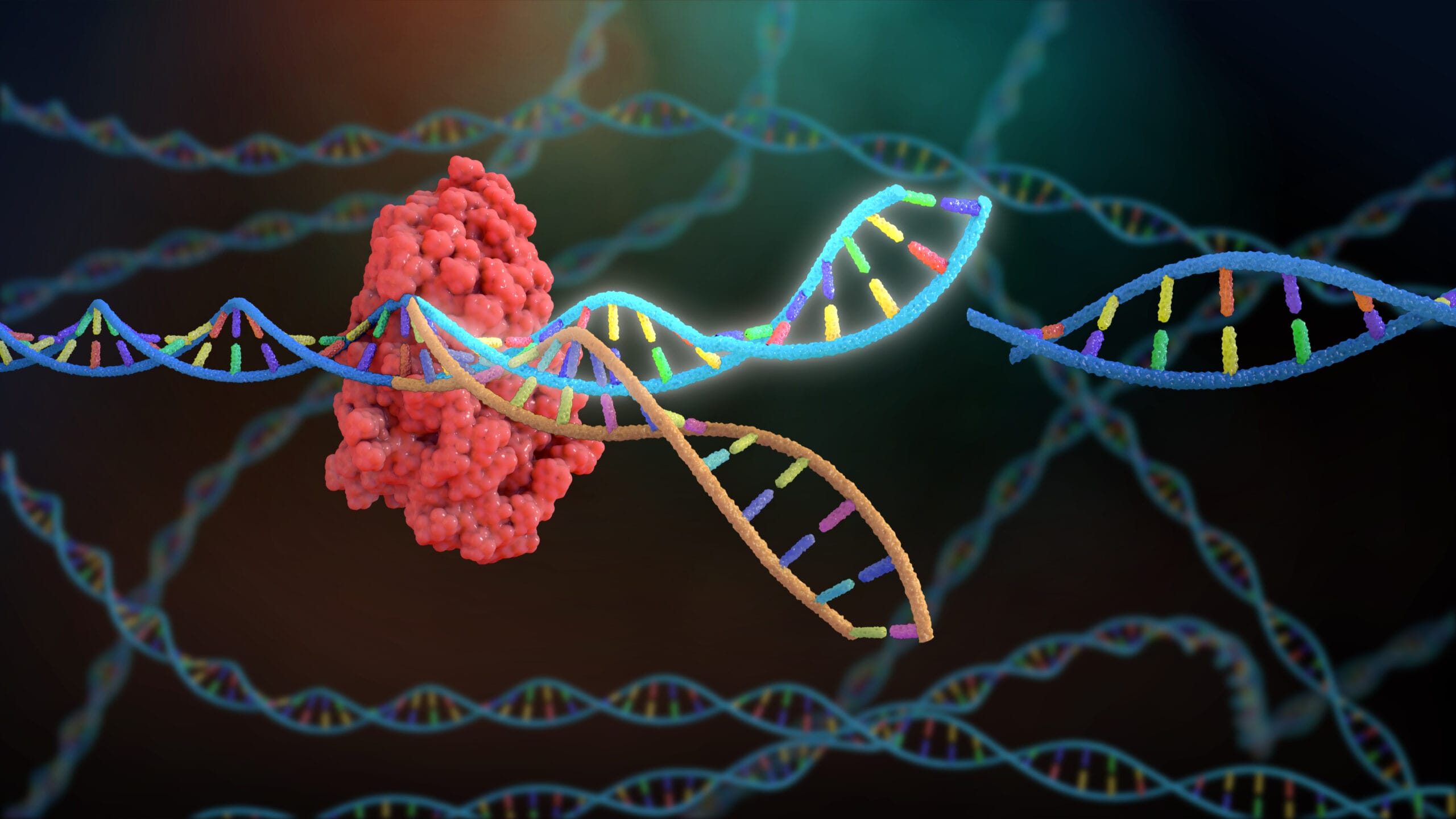
CRISPR, short for Clustered Regularly Interspaced Short Palindromic Repeats, has taken the world by storm since its discovery in the 1980s. What started as a natural defence mechanism in bacteria has evolved into one of the most powerful tools in genetic engineering. With its potential to revolutionise medicine, agriculture, and scientific research, CRISPR offers a glimpse into a future where genetic disorders could be cured, crops could be enhanced, and diseases could be eradicated. However, with this new power comes a lot of ethical considerations that we must address.
How CRISPR Works
CRISPR’s effectiveness stems from its high precision, allowing scientists to target and alter specific genes with incredible accuracy.
The system relies on a protein called Cas9, which functions as molecular scissors, capable of cutting DNA strands at predetermined locations. To direct Cas9 to the correct spot within the genome, researchers use a custom-designed piece of RNA, called guide RNA, that matches the DNA sequence they wish to target. This RNA acts as a blueprint, ensuring that Cas9 makes its cut exactly where needed.
Once the DNA is cut, the cell’s own repair mechanisms begin. These repair processes can be harnessed in different ways, depending on the desired outcome. In one method, called non-homologous end joining (NHEJ), the cell reattaches the DNA ends in a somewhat sloppy manner, often introducing small errors or mutations. This is useful for knocking out genes, effectively disabling their function. On the other hand, homology-directed repair (HDR) leverages the cell’s repair machinery to insert new genetic material into the break, enabling precise edits to the DNA sequence. This process is typically used when scientists want to introduce specific changes, such as correcting a mutation or adding a gene.
The Potential of CRISPR
Medicine
CRISPR has many applications in medicine. Disorders such as sickle cell anaemia, cystic fibrosis and Duchenne muscular dystrophy are all caused by faulty genes, and simply editing or removing those genes could be a viable cure.
Clinical trials have proved that genetic disorders can be cured by CRISPR, and in December of last year the FDA approved for a method of CRISPR to be used to cure sickle cell (https://www.cuimc.columbia.edu/news/columbia-impact-first-new-crispr-therapy-approved-sickle-cell).
Agriculture
CRISPR is also assisting in agriculture, with researchers using the technology to create crops that are more nutritious, longer-lasting, and resistant to diseases and pests. For instance, scientists have developed wheat varieties that are resistant to fungal infections, while tomatoes have been engineered to ripen more slowly, reducing food waste. The ability to create crops that can thrive in harsher conditions could be a major help to feeding the growing global population, especially with areas where famines are more common.
Basic Science
Beyond its practical applications, CRISPR is a powerful tool for basic research. By allowing scientists to manipulate genes with ease, CRISPR accelerates our understanding of how genes influence health, disease, and development. This could lead to breakthroughs in understanding complex conditions like cancer and Alzheimer’s, speeding up the development of new treatments and therapies.
Ethical Dilemmas
Despite its incredible potential, CRISPR raises many ethical and societal questions. Should we use gene-editing technology to enhance human traits, such as intelligence or physical abilities? Should it be allowed to edit the genes of embryos, potentially affecting future generations? These are the kinds of questions that we must consider as CRISPR moves from the laboratory into real-world applications.
Germline Editing
One of the most controversial aspects of CRISPR is germline editing, which involves altering the DNA of embryos. On the one hand, germline editing could eliminate hereditary diseases and improve human health. On the other hand, it carries significant risks, including unintended genetic changes that could be passed down to future generations. There are also concerns about the potential for “designer babies,” where parents could select traits like eye colour, height, or even intelligence. This could lead to a future where social inequalities are exacerbated, and genetic engineering becomes a tool for the privileged few.
Accessibility and Equity
As with any new technology, there is the issue of accessibility. If CRISPR-based treatments become available, will they be affordable to all, or will they be restricted to the wealthy? The risk is that gene-editing technologies could worsen existing social inequalities, creating a world where only the rich can afford life-saving treatments or enhancements, while the poor are left behind. Ensuring that CRISPR is used in an equitable way, accessible to everyone, will be one of the key challenges as the technology progresses.
Environmental Impact
In agriculture, CRISPR could potentially disrupt ecosystems in unforeseen ways. For example, gene-edited crops that are resistant to pests could also harm beneficial insects, leading to unintended consequences for the wider ecosystem. Similarly, creating super-resistant crops could result in the emergence of super-pests or other unforeseen environmental shifts. The potential for ecological imbalance is a real concern that must be carefully considered before CRISPR is widely applied in the field.
Should We Be Doing It?
The question of whether we should use CRISPR is not a simple one. The technology offers incredible potential to improve human health, boost food security, and advance scientific knowledge, however the risks of misuse, unintended consequences, and ethical dilemmas are significant. How do we balance these competing interests?
Most experts agree that CRISPR should be used with caution and under strict regulation. The development of international guidelines and oversight is essential to ensure that the technology is applied responsibly. Public engagement is also crucial; society must be involved in the decision-making process to determine how CRISPR is used and who gets access to it. These decisions will shape the future of gene editing, and it’s vital that we approach them with care and foresight.
CRISPR is undoubtedly one of the most exciting scientific advancements of our time. Its potential to cure diseases, create more sustainable crops, and expand our understanding of biology is unparalleled. However, its ethical and societal implications cannot be ignored. It’s crucial that we move forward with responsibility, equity, and a deep consideration of the potential consequences. CRISPR has the power to shape the future of humanity—but only if we use it wisely.
Written by Hamd Waseem


